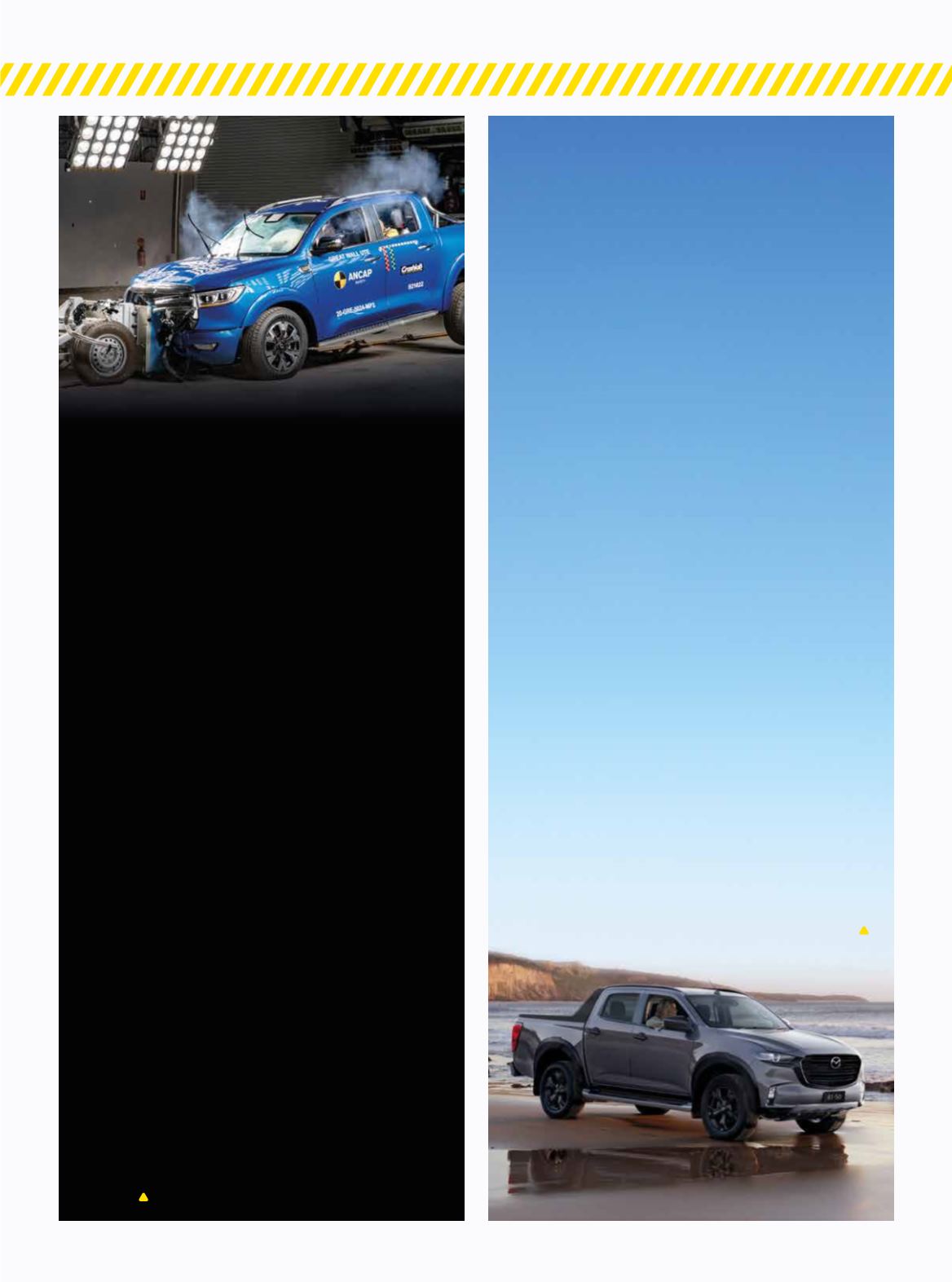

M
azda’s mainstay commercial vehicle, the BT-
50, has been gifted its first major update for
2022, with key changes to specification, an
additional SP grade, a new 1.9L turbo diesel option and
modest price rises across the board.
The arrival of the 1.9L option mirrors that of the Isuzu
D-Max mentioned earlier – for the uninitiated, the D-Max
and the BT-50 are platform cousins and share much of
their under-the-skin hardware.
And that means the critical metrics are largely the
same too, with 110kW and 350Nm on offer from the 1.9L.
There’s a key difference, however: while Isuzu confines
the 1.9L engine to the D-Max SX grade, Mazda limits its
version of the 1.9L to… the BT-50 XS.
There’s actually other - far more meaningful –
differences, and they’re ones that could nudge buyers in
Mazda’s direction rather than Isuzu’s. While the Isuzu
D-Max’s budget-friendly 1.9 is only available as a RWD
single-cab chassis, the Mazda BT-50 XS 1.9L can be had
as either a 4x2 single-cab chassis, 4x2 dual-cab pickup
and even a 4x4 dual-cab pickup, and all come with a six-
speed auto by default.
There’s a catch, though. The Mazda option will cost
you more, with the BT-50 XS 1.9L 4x2 single-cab listed
with a $38,490 driveaway price. The XS 4x2 dual-cab is
a $43,990 proposition, while the XS dual-cab 4x4 sits at
$51,490 driveaway (though that still makes it the most
affordable auto-equipped dual-cab 4x4 BT-50).
The BT-50 SP is a new grade for 2022 and comes with
the established 140kW/450Nm turbo-diesel inline four
with either a six-speed manual or six-speed automatic.
A dual-cab bodystyle and dual-range 4WD driveline is
standard on the SP, along with, 18” alloys, a tub liner,
roller tonneau cover, a gloss black sports bar and wheel
flares, metallic grey roof rails and heated front seats.
J
ust over a year after first promising tighter scrutiny
of safety standards within the commercial van
segment, Australia’s independent crash safety
body ANCAP has released its second study of load-lugger
crashworthiness.
And with the pandemic boosting demand for parcel
delivery services, the size of van fleets in this country
have skyrocketed by a similar percentage.
But while being a forgotten category in the past,
where safety standards were often seen as secondary
to maximising payload and cubic capacity, modern vans
appear to be stepping up their safety credentials in a big
way.
The Hyundai Staria Load, for example, earned the
first Platinum rating for crash avoidance technology in
ANCAP’s study, as well as full marks in the side-impact
and an overall five-star safety rating.
The Mercedes-Benz Vito, Toyota Hiace and Ford
Transit were also singled out for their solid performance
in crash avoidance performance, with the Vito in
particular getting recognition for improving its previous
score in that area of 23% to 61%.
With fleet operators beginning to demand greater
levels of safety for their drivers, standards across the
van segment are improving. However, ANCAP’s study
did reveal some vehicles with poor crash avoidance
performance. The models which earned a “not
recommended” rating for crash avoidance technology
were the Mitsubishi Express, Renault Trafic and Renault
Master.
Besides the crash avoidance study, many commercial
vehicles are also excelling in broader crash safety
testing. The aforementioned Staria Load is one, but
other recent earners of a five-star crash rating include
Volkswagen’s box-fresh Caddy as well as the Chinese
GWM Ute.
VAN SAFETY
AGAIN UNDER THE
SPOTLIGHT
MAZDA BT-50
CREEPS UP IN PRICE
WITH UPDATE
















